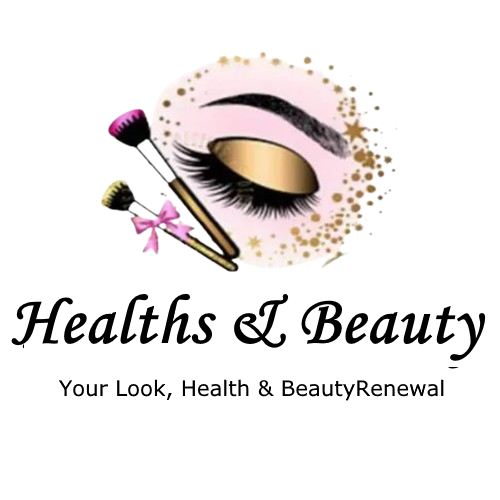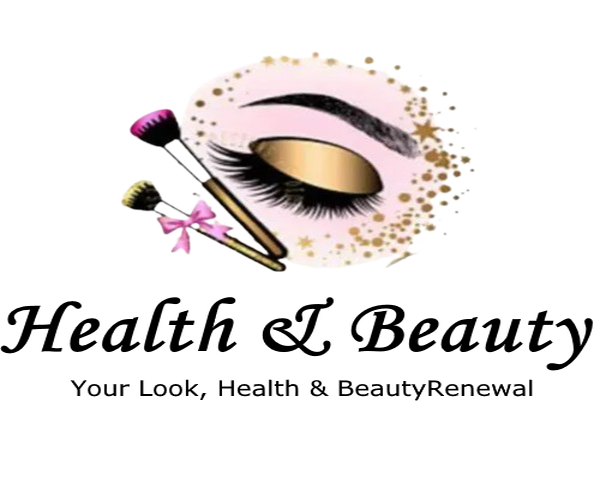Headaches are a common ailment that can significantly impact your daily life. Understanding the type of headache you’re experiencing is the first step towards effective relief. This guide will help you identify various headache types, their symptoms, and the best treatment options.
Key Takeaways
- Understanding the characteristics and triggers of primary headaches can help in effective management.
- There are several common types of headaches, including tension, migraine, and cluster headaches, each with distinct symptoms.
- Identifying your headache by its pain pattern, associated symptoms, and frequency can aid in accurate diagnosis and treatment.
- Consult a doctor if you experience severe, persistent, or recurrent headaches, especially if accompanied by other symptoms.
- Various treatment options are available, ranging from over-the-counter medications to non-pharmacological treatments and lifestyle changes.
Understanding Primary Headaches
Primary headaches are caused by dysfunction or over-activity of pain-sensitive features in your head. They’re not a symptom of or caused by an underlying medical condition. Some people may have genes that make them more likely to develop primary headaches.
Characteristics of Primary Headaches
Primary headaches occur when the pain in your head is the condition itself. In other words, your headache isn’t triggered by something your body is dealing with, like illness or allergies. Types of primary headaches include:
- Tension-type headaches (the most common type of headache).
- Migraine headaches.
- Cluster headaches.
- New daily persistent headaches (NDPH).
Episodic vs. Chronic Headaches
Primary headaches can be episodic or chronic. Episodic headaches occur occasionally and can last from 30 minutes to several hours. Chronic headaches are more frequent, occurring 15 or more days a month for at least three months.
Common Triggers
Common triggers for primary headaches include stress, lack of sleep, poor posture, and certain foods or drinks. Identifying and avoiding these triggers can help manage and prevent headaches.
If your headache is less severe, read on to learn how to identify the type you may be experiencing and what you can do to ease your symptoms.
Common Types of Headaches
There are over 150 types of headaches, but the most common types include:
Tension Headaches
Tension headaches are the most common type of headache among adults and teens. They cause mild to moderate pain and come and go over time. They usually have no other symptoms.
Migraine Headaches
Migraine headaches are characterized by intense, throbbing pain often on one side of the head. They can be accompanied by nausea, vomiting, and sensitivity to light and sound. Migraines can last for hours or even days.
Cluster Headaches
Cluster headaches are one of the most severe types of headaches. They occur in cyclical patterns or clusters, often waking people from sleep due to intense pain around one eye or one side of the head. These headaches can last for weeks or months, followed by remission periods when the headaches stop.
Identifying Your Headache by Symptoms

Pain Patterns
Understanding the pain pattern of your headache is crucial. Is the pain constant or does it come and go? Does it feel like a tight band around your head, or is it more of a throbbing sensation? These details can help pinpoint the type of headache you are experiencing.
Associated Symptoms
Headaches often come with other symptoms. Do you experience nausea, sensitivity to light, or visual disturbances? These associated symptoms can provide important clues about the nature of your headache.
Duration and Frequency
The duration and frequency of your headaches are key factors in diagnosis. Episodic headaches occur less frequently and are often less severe, while chronic headaches are more persistent and debilitating. Keeping track of how long your headaches last and how often they occur can aid in identifying the type of headache you have.
Keeping a headache diary might help determine your headache type. Note when your headaches occur, your symptoms, and potential triggers, such as food, stress, or changes in sleep.
When to Consult a Doctor
Warning Signs
Most headaches don’t have a serious underlying cause. However, certain warning signs suggest you should seek medical advice. These include:
- A significant head injury in the previous three months.
- Sudden severe headache that worsens quickly.
- Confused thoughts, slurred speech, or weakness.
- Changes in your ability to see or speak.
- Weakness, drowsiness, confusion, or loss of balance.
- Feeling short of breath.
Severe or Persistent Headaches
If you start getting headaches for the first time, or if anything is new or different about your headaches, it’s important to consult a healthcare provider. Headaches that persist or worsen over time should not be ignored. These symptoms suggest a more serious condition, so getting a prompt diagnosis and treatment is important.
Headaches with Other Symptoms
Contact your healthcare provider if you or your child has any of the following symptoms along with a headache:
- Fever
- Stiff neck
- Rash
- Vomiting
- Seizures
- Double vision
- Weakness in any part of the body
If headaches are disrupting your activities, work, or personal life, it’s time to see your doctor. Headaches can’t always be prevented, but your doctor can help you manage the symptoms.
Treatment Options for Headaches
Over-the-Counter Medications
For many headache sufferers, over-the-counter (OTC) medications can provide significant relief. Common options include non-steroidal anti-inflammatory drugs (NSAIDs) such as ibuprofen, naproxen, and aspirin. Acetaminophen is another popular choice. These medications are often effective for tension-type headaches and mild migraines.
Prescription Medications
When OTC medications are not sufficient, prescription drugs may be necessary. Triptans, such as sumatriptan and rizatriptan, are commonly prescribed for migraines. Antiemetics like metoclopramide can help manage nausea and vomiting associated with severe headaches. For chronic headache sufferers, daily preventive medications such as topiramate or propranolol may be recommended.
Non-Pharmacological Treatments
Non-drug treatments can also be effective in managing headaches. Transcranial magnetic stimulation (TMS) and acupuncture have shown promise. Lifestyle changes, including regular exercise, stress management, and dietary adjustments, can also play a crucial role in reducing headache frequency and severity.
It’s essential to consult a healthcare provider to determine the most appropriate treatment plan for your specific type of headache.
Preventing Headaches
Preventing headaches involves a combination of lifestyle changes and proactive measures. Avoid your headache triggers — including dehydration, skipping meals, and too little sleep — and you may stay pain-free. Here are some effective strategies to help prevent headaches:
Lifestyle Changes
Adopting healthy habits can significantly reduce the frequency and intensity of headaches. Consider the following lifestyle changes:
- Get enough sleep on a regular schedule.
- Eat balanced meals and avoid skipping meals.
- Stay hydrated by drinking plenty of fluids.
- Engage in regular physical activity.
- Manage stress through relaxation techniques or therapy.
Avoiding Triggers
Identifying and avoiding headache triggers is crucial. Common triggers include:
- Certain foods and drinks, such as alcohol and caffeine.
- Environmental factors like bright lights and loud noises.
- Stress and anxiety.
- Hormonal changes in women.
- Weather changes.
Regular Medical Check-Ups
Regular check-ups with your healthcare provider can help in early identification and management of potential headache triggers. Discuss preventive treatments with your doctor to find a plan that fits your needs. This may include:
- Preventive medications.
- Lifestyle recommendations.
- Monitoring and managing underlying health conditions.
Consistency in these preventive measures can lead to a significant reduction in headache occurrences and improve overall quality of life.
Keeping a Headache Diary

Tracking Symptoms
A headache diary is an invaluable tool for tracking your symptoms. By noting the day and time of each headache, you can start to see patterns and identify potential triggers. Factors like stress, sleep, diet, and the weather can impact your headaches. A headache diary can help you uncover triggers and find ways to reduce them.
Identifying Triggers
When you keep a headache diary, you can track various lifestyle factors that may contribute to your headaches. This includes your water intake, sleep quality, diet, and stress levels. Over time, you may notice that certain activities or foods are linked to your headaches. This information is crucial for making lifestyle changes that can help reduce the frequency and severity of your headaches.
Sharing Information with Your Doctor
A headache diary is not just for your benefit; it can also be extremely helpful for your doctor. By providing detailed information about your headaches, you enable your doctor to make a more accurate diagnosis and tailor a treatment plan specifically for you. Be honest and thorough in your entries to get the most benefit from this practice.
Keeping a headache diary can be a game-changer in managing your headaches. It provides valuable insights that can lead to more effective treatments and a better quality of life.
Conclusion
Understanding the type of headache you are experiencing is the first step towards effective relief. By identifying your headache type, whether it be tension, migraine, cluster, or another form, you can tailor your treatment approach to better manage and alleviate your symptoms. Keeping a headache diary, noting the onset, frequency, and triggers, can be invaluable in this process. While over-the-counter medications can provide temporary relief for minor headaches, persistent or severe headaches should be evaluated by a healthcare professional. Remember, you don’t have to suffer in silence—help is available, and with the right approach, you can find relief and improve your quality of life.
Frequently Asked Questions
What are the most common types of primary headaches?
Primary headaches occur when the pain in your head is the condition itself. These headaches can be episodic or chronic.
How can I accurately diagnose my headache?
Your headache can be more accurately diagnosed by knowing when it started, whether there’s a single type or multiple types if physical activity aggravates the pain, who else in your family has headaches, and what symptoms occur between headaches.
What should I do if I think I have migraines or cluster headaches?
If you think you’re having migraines or cluster headaches, or have any other questions or concerns, please consult your doctor.
How can keeping a headache diary help?
Keeping a headache diary can help determine your headache type by noting when your headaches occur, your symptoms, and potential triggers such as food, stress, or changes in sleep.
When should I consult a doctor for my headaches?
Anyone who experiences severe, persistent, recurrent, or worsening headaches should consult a healthcare professional. Immediate medical assistance is needed if headaches are accompanied by other severe symptoms.
What are common treatments for tension headaches?
Common treatments for tension headaches include over-the-counter pain relievers like aspirin, ibuprofen, naproxen, and acetaminophen. If these aren’t effective, a doctor may recommend prescription medications.
Meta Description






